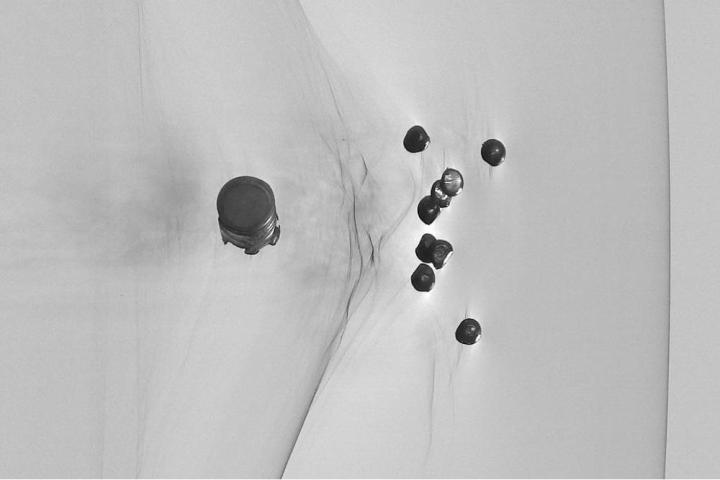
Whether it’s an athlete running down the field or a train zooming by, high-speed action is something that’s usually difficult to photograph, requiring a fast camera and a bit of luck. So imagine if you’re asked to photograph an object that’s traveling at 7,500 miles per hour. How on Earth are you going to do that? Well, you’d call up a company in Laguna Hills, California, called MetroLaser, which has developed a high-speed system that works with current pro DSLRs.

MetroLaser, a company that makes “optical diagnostic solutions,” was tasked to develop this camera by the U.S. Air Force as a replacement for film-based streak cameras, which uses film that’s no longer manufactured but are still in used at high-speed test tracks. A traditional streak camera captures a moving object as it passes the camera lens while the film behind a vertical slip aperture moves along during exposure, resulting in a continuous composite image. According to Phys.org, “The new digital technology for this camera relies on a precisely controlled mirror to follow the object and freeze the image on the camera,” allowing for high-quality magazine-type images.

This new digital streak system works with any camera designed for commercial portraits and standard flashes, while the software can run on compact, low-power computers. “The real power of this approach is that you can take almost any kind of existing camera back and fit it into a rig like this to turn it into a high-speed streak camera,” MetroLaser engineer Benjamin Bruckner told Phys.org. Bruckner and co-engineer Drew L’Esperance published the findings in the journal, Optical Engineering.
With its capability of capturing objects traveling at nearly 10 times the speed of sound, the system is ideal for things like ballistics research, racetracks, and rocket sled imaging.

(Images by MetroLaser via PetaPixel via SPIE)


